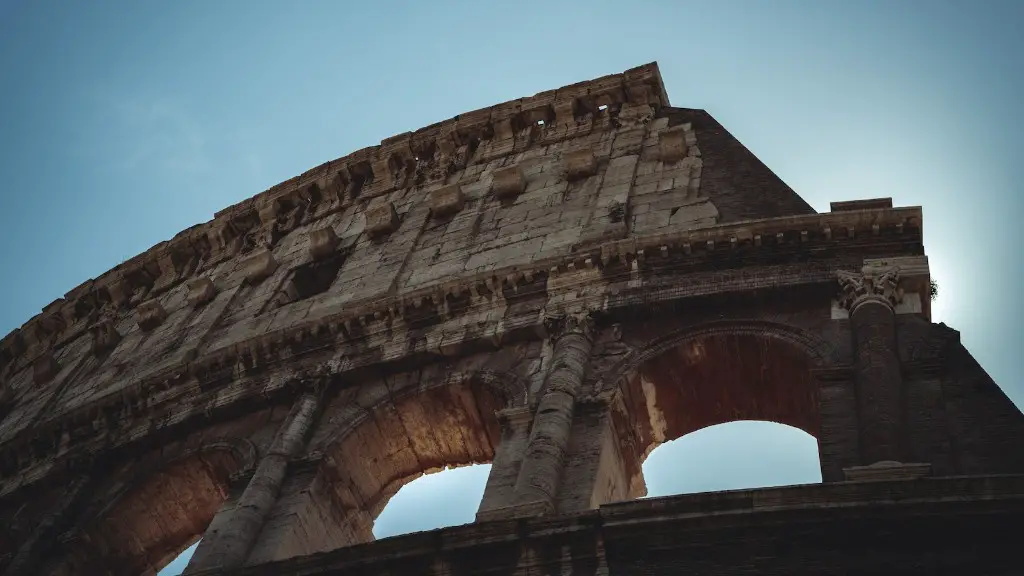Slavery was an integral part of ancient Rome from its earliest days until the system was gradually phased out in the 5th century AD. Slaves were owned by wealthy citizens and as Roman expansion continued, more and more slaves were brought to Rome from conquered territories. Slavery was not based on race but on social status; however, the vast majority of slaves in Rome were foreigners.
There is some debate over whether or not ancient Rome can be classified as a slave society, as there was no legal institution of slavery and slave status was not inherited. However, it is estimated that between a quarter and a third of the population were slaves, and they were essential to the economy and way of life in Rome. Slaves were used for domestic work, manual labor, and as soldiers, among other roles. While some slaves were treated relatively well, others were subject to brutal treatment and lived in dismal conditions.
What was Rome’s role in slavery?
Slavery in ancient Rome played an important role in society and the economy. Besides manual labour, slaves performed many domestic services and might be employed at highly skilled jobs and professions. Accountants and physicians were often slaves. Slaves of Greek origin in particular might be highly educated.
There were two main types of slaves in Rome: public and private. Public slaves (called servi publici) were owned by the Roman government and might work on public building projects, for a government official, or in the emperor’s mines. Private slaves (called servi privati) were owned by an individual and might work in that person’s home, business, or on their farm.
What nationality were Roman slaves
The majority of Roman slaves were from Greece because of the numerous wars between the two countries and Roman victories. The first great influx of Greek slaves into Rome occurred after the defeat of the Macedonians at the battle of Pydna in 168 BC.
It’s interesting to see the contrast between how women and slaves were treated in ancient times. Women were at least given some honor and respect, even if they were just seen as priestesses or family members. Slaves, on the other hand, were seen as less than human and were often treated as such by their masters. It’s a reminder of how far we’ve come in terms of equality, but also a reminder of how much further we have to go.
How long did Rome have slavery?
The life of a slave in ancient Rome was often one of extreme hardship and brutality. Slaves were owned by wealthy citizens and were used for a variety of purposes, including manual labor, domestic work, and as entertainment. They were often treated with great cruelty and lived in fear of their masters. Although some slaves were able to gain their freedom, most remained in bondage their entire lives.
Most gladiators were slaves, ex-slaves, or freeborn individuals who fought under contract to a manager. They were often ranked below prostitutes, actors, and pimps, and generally regarded as both moral and social outcasts. Gladiators were usually trained in a specific style of fighting, and were expected to fight to the death in matches staged for the entertainment of crowds of spectators.
What race were Romans?
The early Romans were made up mostly of people who spoke Latin, known as the Latins. The Latins were a people with a marked Mediterranean character, related to other Italic peoples such as the Falisci.
The games were seen as both a high and low art: lucky or successful gladiators could earn respect, admiration, money and social status through participating and winning. But many gladiators were also slaves, forced to compete and die for the entertainment of the people.
Were Roman slaves allowed to marry
Enslaved people under Roman law had very few personal rights and were largely regarded as the property of their masters. They could be bought, sold, and mistreated at will, and were unable to own property, enter into a contract, or legally marry. This legal situation meant that enslaved people were very vulnerable to abuse and mistreatment by their masters.
Rome’s government and economic corruption led to many problems that contributed to the decline of the Roman Empire. Rome’s economy was based on slave labor, which created a large gap between the rich and the poor. The rich grew wealthy from their slaves while the poor could not find enough work. This inequality led to social unrest and ultimately the fall of the Roman Empire.
Did slaves build the Colosseum?
The Colosseum is a huge amphitheatre in Rome, Italy. It is considered one of the greatest works of Roman architecture and engineering. The Colosseum’s construction was ordered by the Roman Emperor Vespasian of the Flavian Dynasty in 70-72 AD. After Emperor Vespasian died, it was completed by his sons Titus and Domitian. The physical construction work was done by Jewish slaves, who were overseen by Roman architects, engineers, and artists.
Spartacus was a famous Roman gladiator who led a slave rebellion against his master. He was put through gladiator training school, which was an incredibly brutal place. Spartacus and 78 others revolted against Batiatus using only kitchen knives.
Were all the gladiators slaves
The note is to inform that not all gladiators were always enslaved. This is because by the 1st century AD, the demographics had started to change where some gladiators were people who had committed crimes.
Traditionally, gladiators were selected slaves or conquered people. Typically chosen for their strong physiques, they would be hand selected and trained into gladiators. However, as the gladiator games gained steam, many gladiators were free working class men who willingly signed up.
What skin color were Romans?
Roman skin tones ranged from light brown to pale skin. This was due to the different geographical origins of the Roman people. The lightest skin tones were found among the people from the northern regions, while the darkest skin tones were found among the people from the southern regions.
In AD 193, Lucius Septimius Severus was named ruler of the Roman Empire and in doing so became Rome’s first African Emperor. After emerging victorious from a period of civil war, Severus expanded the border of the empire to new heights, ushering in a period of imperial transformation and founding a dynasty.
What skin color did ancient Romans have
The Romans were a cosmopolitan people, and their skin tones reflected this. They were slightly tanned from the sun, but also had an admixture of Mediterranean and Northern European features. To the Romans, if you ate and dressed as a Roman, you were a Roman.
The legal age for marriage was originally 12 for girls and 14 for boys, but most Roman women tended to marry in their late teens or early twenties. Noblewomen tended to marry at a younger age than those of the lower classes, and an aristocratic girl was usually expected to remain a virgin until her first marriage.
Warp Up
Slavery was an integral part of ancient Roman society. Slaves performed a variety of functions, from manual labor to skilled work. Many slaves were owned by wealthy families and were treated relatively well. However, others were owned by the government and worked in grueling conditions.
There is evidence that ancient Rome was a slave society. Slaves were owned by the wealthy and were used for labor. They were bought and sold, and their lives were controlled by their owners. There was little social mobility for slaves, and they were considered property rather than people. The evidence suggests that ancient Rome was a slave society.





